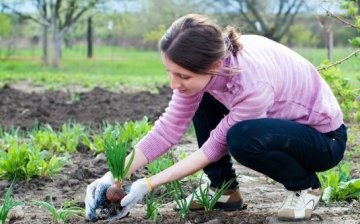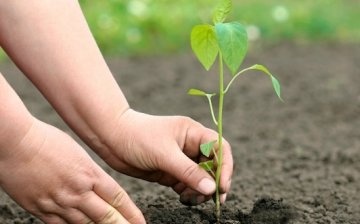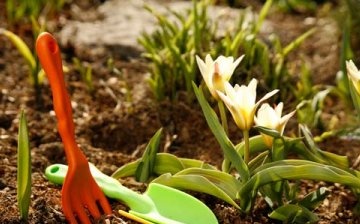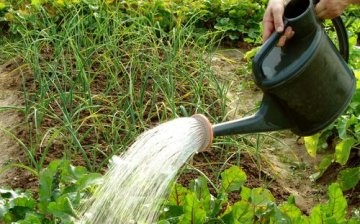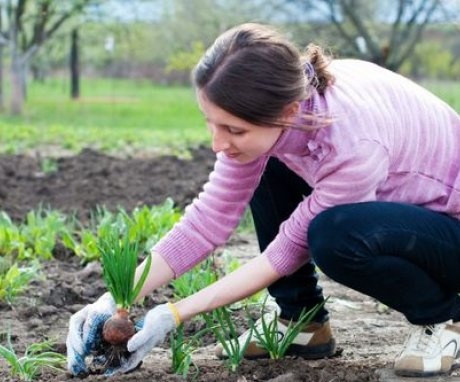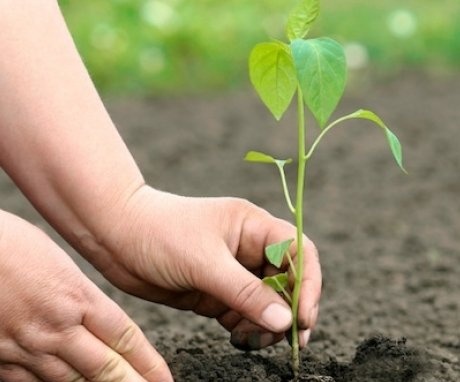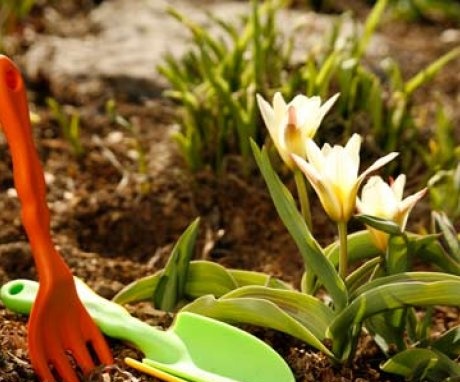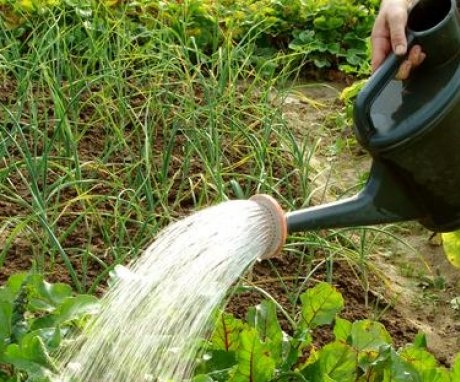Spring work in the garden and garden: what to do in March, April and May
With the onset of spring, the season begins for summer residents and owners of private houses. What should you prepare for since winter?
Content:
Works in March
At the beginning of March, the snow begins to melt, so all work will be associated with soil cultivation, in some cases with water retention, etc. Melt water can be retained using equipped grooves that will not allow it to drain down the slope. If the site is on the contrary on the lowland, then the snow is removed from the drainage grooves. Snow and frost are removed from the shoots of young trees, they can break branches.
A garden pitchfork is used to clear the snow from the soil. When working with them, it is important not to damage the roots that come close to the soil.
In the areas between the rows, you need to quickly remove the snow so that the soil is saturated with melt water. Ash or covering the area with plastic wrap will help to activate the melting process.
Plants can get sunburn when exposed to bright sun. A burn occurs due to overheating of the bark and as a result of a sharp change in temperature day and night. For this, the trunks and bases of tree branches must be whitewashed. Young trees can be anointed with recharge, it is made mullein and clay.
To check if the tree is doing well after frost, you need to make an incision in the damaged areas of the bark. If the tree is frozen over, the inside of the cut will be black. And the last thing that can be done in March is to treat the plants with copper sulfate or Bordeaux liquid, which will destroy harmful microorganisms.
To prevent parasites from penetrating the shrub from the soil, you can pour boiling water over the shoots and then lay a plastic wrap. The affected branches must be cut off and must be burned.
Well, now you can plant some plants. In March they sow:
The soil for these plants should be filled with peat and humus, loosened. If the soil has high acidity, then appropriate measures are taken to normalize the pH. Mineral fertilizers and, if possible, wood ash are applied to the ground.
Works in April
In April, you can continue to prune fruit bushes and trees, but this should be done at the beginning of the month. The trees are sprayed for parasites.
It is in April before the buds appear grafting of trees... You can also lay out the potatoes for vernalization.
If spring has come early and the snow has completely thawed, you can start planting annual plants. These should be varieties that are not afraid of cold weather. Other flowers are planted in boxes for seedlings.
At the beginning of the month for growing seedlings sow cabbage seeds medium and late ripeness. If there are plants on the site that were hiding for the winter, then they can be opened. This is not done abruptly, the plants must adapt to the sun. Therefore, it is necessary to clean the shelter for several hours, preferably in cloudy weather, then gradually give the opportunity to be in the sun. You can completely remove the shelter when the kidneys swell.
Some seedlings may already begin to stretch. You can help her and move the box to a lighter area, moreover, this will serve as a hardening.Seedlings can be sprayed against pests.
Next, you can put a film on the intended planting site of vegetables. It will retain moisture and accelerate weed growth. By the time the plants are planted, these weeds will be easier to identify and remove. After a couple of weeks, you can feed the fruit bushes and trees, the flowers are just beginning to bloom. At this time, it is not too late to start grafting trees.
At the end of the month, seeds of the following crops can be sown in open ground:
When the soil is completely thawed, it can be loosened up, so the moisture will remain longer. April is the time to prepare gooseberry and currant layers. If there are seedlings of shrubs and trees, then after April they are no longer planted.
In advance, you need to prepare smoke bombs, hay or dry grass. They are useful for protecting fruit trees from possible frost.
Nitrogen fertilizers are applied for primroses and bulbous crops. Before that, fallen leaves and dull grass are removed. Until the hot weather begins and moisture stays in the ground, rhizomes and bulbs are planted.
Formative pruning of ornamental plants is acceptable in April. New plants can be obtained from cut branches. To do this, cuttings are placed in moist soil and covered with a film or bottle.
Works in May
If there is a hedge, then in May you can put it in order, cut off the protruding shoots. The lawn is also given a neat look. When the threat of frost blowjob, you can plant rose seedlings. In a permanent place, you can plant other annuals that could die during frosts. It is advisable to shade young plants, because in May the sun can already be quite aggressive.
May is suitable for planting gladioli and other corms.
When the flowering period ends hyacinths, daffodils or tulips, they will need to be watered for another two weeks for the nutrients to fill the bulb for the next flowering. If any bulbs were affected by diseases, then they must be destroyed.
The following plants are sown in mid-May:
At the end of May, flowers are planted in containers that will decorate the veranda or window sills. As for fruit trees, trapping belts are installed on the trunks in May. They will keep parasites out of the soil and into the bark. Some fruit shrubs need to be thinned out by removing young branches (since last year's shoots usually bear fruit).
Tips for gardening:
- Remove the raspberry beetle from the raspberries. Black currant treated with infusion of weeds to protect against glass. Spraying with any chemicals is done before or after flowering, but in no case during.
- At the place where vegetable crops grow, the land must be loosened, dug up or harrowed. Row spacings and soil in the near-trunk circles of fruit trees are also dug up.
- In May, red and white cabbage is planted in open ground. Time is right for boarding in the greenhouses of pepper, tomato, eggplant... You can also have time to plant beans, dill, parsley, lettuce, sorrel, turnips, beets, onions, rutabagas.
- In May potatoes are planted, carrots, watermelons and melons. Heat-loving crops can be planted only if the threat of frost has passed by 100%. If they nevertheless come, then the plants are covered with lutrasil. Seedlings are covered with sawdust or burlap
- So that the seedlings take root faster, humus or compost is laid around it.
In the spring you will have to work hard, during this period almost all flowers and vegetables are planted, most of the care procedures are performed.
More information on how to care for trees in spring can be found in the video.




